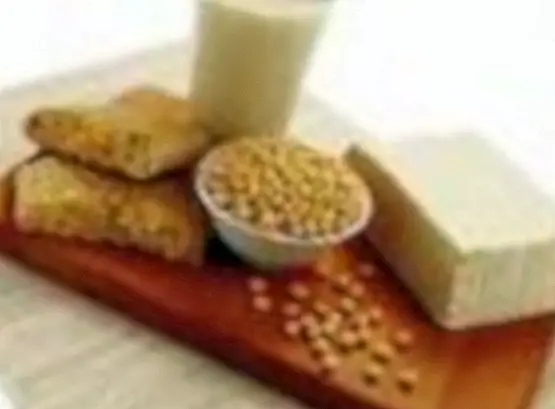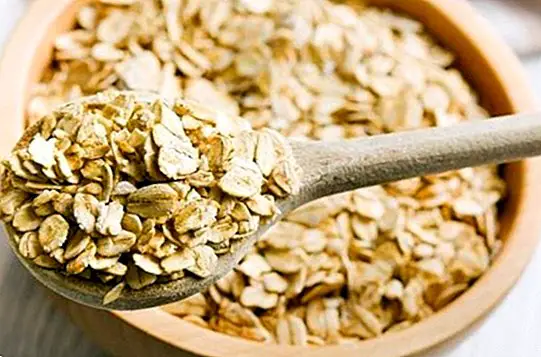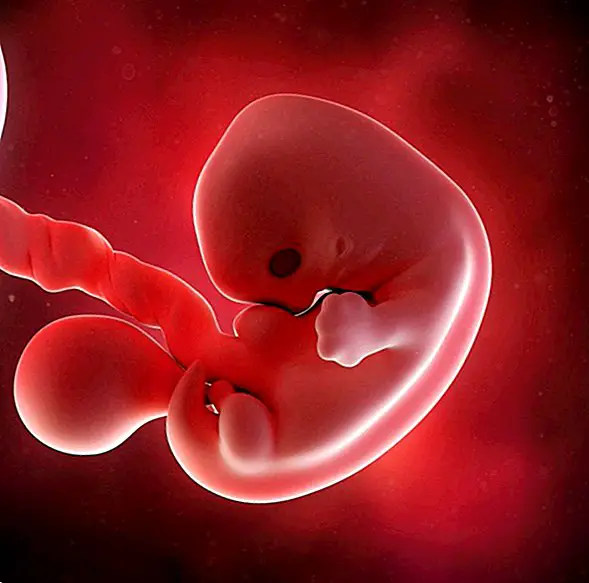Diet to follow after removal of the gallbladder
The gallbladder is a small pear-shaped organ that we find located under the liver. Generally it does not usually give problems unless it does not work correctly or when stones are formed (known medically and popularly with the name of gallstones) and one of them obstructs the bile duct, which can cause very painful colic and in more serious conditions cause a pancreatitis (the inflammation of the pancreas).
Given these conditions, it is best to make a removal of the gallbladder, a routine and very usual operation, which is characterized above all by being extremely simple, especially if it is done through laparoscopy, which stands out as the surgery of choice in most cases for being minimally invasive, barely causing discomfort in the patient and because in just 1 or 2 days you can return home (even on the same day).

Of course, if we take into account the functions that the gallbladder performs, among which stand out the storage of bile for the adequate absorption of fats helping in turn in the process of digestion, it is evident that after a gallbladder removal it is convenient to follow a proper diet. In general, the diet to follow should be a type of low-fat diet, especially during the first weeks after the operation. In this sense there are doctors who advise a bland diet, and those who advise a normal diet but low in fat, in which certain foods must be avoided.
How is it and what is the diet to follow after the removal of the gallbladder?
Once the gallbladder is removed, usually disappear those symptoms that arose when eating a specific food or dish rich in fat. However, it may appear diarrhea, which usually disappears little by little by adopting a bland diet.
So, The diet to follow basically consists in opting for a diet with few fats or oils, being advisable to opt for steaming, papillote or boiled foods in order to reduce the presence of oil in the preparation of food.

It's appropriate maintain a diet rich in vegetables, fruits and vegetables, which are very rich in fiber, vitamins and minerals. The presence of fiber in the diet is even more important after a removal of the gallbladder, since it forms a 'network' capable of capturing the bile and helping its better elimination, which in turn improves the state of the digestive wall which is often irritated with ease as a result of the presence of bile. Further, opting for a high-fiber diet helps treat diarrhea as it makes stools firmer. In this sense, foods like brown rice and wholemeal bread, in addition to whole grains.
Which foods are the most suitable
In addition to following a low-fat diet, there are certain foods that are especially suitable after removal of the gallbladder. They are the following:
- Probiotic foods: they provide healthy bacteria that protect the intestinal wall. Stresses bifidus skimmed yogurt and miso.
- Vegetables and fruits rich in beta-carotene: the carrot is one of the vegetables with the highest content of beta-carotene, which protects the digestive membranes against the irritating action of bile. You can choose to consume raw, pureed or cooked cream, or liquefied in a delicious juice. They also include peaches, pumpkins and mango.
- Foods rich in fiber: as for example sesame, flaxseed and chia seeds. Fiber is essential in a diet after the removal of the gallbladder because it captures the bile juices during its passage through the intestine.
- Rice and whole grain bread: both brown rice and wholemeal bread are very rich in fiber, helping the best elimination of bile.
- Artichoke: it is one of the best-known foods in liver care, by improving its functioning thanks to the presence of cynarin.
- White or lean meats: they are meats that stand out for not being very fat. Highlights include chicken, turkey and rabbit meat. However, it is also advisable to remove all visible fat present in them.
- White fish: like hake, monkfish or sea bass.
- Vegetable drinks: it is advisable to opt for vegetable drinks such as oatmeal, rice or almonds.
- Skimmed dairy: they are more suitable for their low fat content.
What foods should we avoid after a gallbladder removal?

Just as there are recommended foods during the follow-up of a diet after the removal of the gallbladder, we must also mention those foods that must be eliminated from the diet:
- Foods rich in fat and cholesterol: fried and breaded foods should be avoided, as well as fried nuts, snacks and salty snacks, sausages, chocolate and fatty cheeses.
- Red meats: for its high content in fats, cholesterol and purines.
- Whole Dairy: due to their high fat content, not only whole milk products should be avoided, but also semi-skimmed dairy products. In particular, whole milk, whole yogurt (especially the Greek type) and fatty cheeses.
- Blue fish: like salmon, being very rich in fat.
- Coffee: it should be avoided or consumed with much moderation since it produces discharge of bile, especially on an empty stomach.
- Other foods: citrus fruit consumption should be avoided in fasting (for example, lemon, grapefruit or orange juice), spinach, coffee and olive oil fasting.
- Alcoholic drinks: since they can cause liver problems.
Useful and appropriate tips to follow
On the other hand, it is very important avoid copious and excessive meals, so as not to overload our stomach and especially the liver. In this point, It is advisable to make 4 or 5 meals a day that are also light.
When preparing food these must be steamed, baked or papillote, avoiding frying and the use of oils for their preparation.
It is also very useful follow proper hydration, opting for quality mineral waters, liquefied natural fruit juices at home and infusions for the liver, which help you perform your functions better.
Usually this diet should be maintained for at least 15 days - 1 month, then follow a normal diet low in fat.
Images | ISTOCKPHOTO / THINKSTOCK This article is published for informational purposes only. It can not and should not replace the consultation with a Physician. We advise you to consult your Trusted Doctor. ThemesGallbladder



